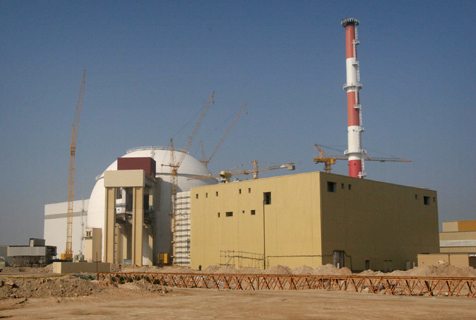Iran said Tuesday it has begun installing new centrifuges with “better quality and speed” to enrich uranium in its nuclear facilities, defying international demands it halt its atomic activities.
“The installation of new centrifuges with better quality and speed is ongoing. We have announced it and the agency (UN atomic watchdog) has full supervision of them,” Iranian foreign minister spokesman Ramin Mehmanparast told reporters at his weekly press briefing.
“They are fully aware that Iran’s peaceful nuclear activity continues to progress. This is another confirmation of the Islamic republic’s successful stride in its nuclear activities,” he added.
He was responding to questions about progress in the installation of new-generation centrifuges, as per a June 8 announcement by Iran’s nuclear chief Fereydoun Abbasi Davani.
Abbasi Davani had at the time said “the first cascade of 164 new-generation centrifuges” would soon be installed, without elaborating on the details of the new machines.
He had at the same time announced that the Islamic republic would expand its production of 20 percent enriched uranium and move the work from its main enrichment plant in Natanz in central Iran, to a smaller site at Fordo, some 150 kilometres (90 miles) south of Tehran.
Other Iranian authorities have over the past year or so said Tehran was working on new-generation centrifuges capable of enriching uranium up to five or six times faster than those currently in operation.
Washington and several European nations called Abbasi Davani’s declarations as “provocation.”
Despite being targeted by four sets of UN Security Council sanctions over its refusal to suspend uranium enrichment, Iran remains adamant that it will push ahead with the programme.
Iran has long been producing low or 3.5 percent enriched uranium (LEU) at Natanz, but started producing uranium at the higher level of purity of 20 percent in February 2010, ostensibly to make the fuel for a medical research reactor.
The UN Security Council in New York has repeatedly ordered Tehran to halt all uranium enrichment until the International Atomic Energy Agency (IAEA) has verified the exclusively peaceful nature of its nuclear activities.
Uranium enrichment is the most sensitive part of the programme because it can be used to produce both the fuel for a nuclear reactor and the fissile material for an atomic warhead.
The West accuses Tehran of seeking to build a bomb under the guise of a civilian power programme, a charge which Iran strongly denies.
Iran has over 8,000 centrifuges of the first generation IR-1, with nearly 6,000 actively purifying uranium to the 3.5 percent level, according to the latest report by the IAEA, the UN nuclear watchdog, in May.
Iran through its enrichment activities has amassed four tons of LEU around 3.5 percent) and 60 kilograms of HEU (highly enriched uranium) of 20 percent, according to the same report.
Iran says it needs the HEU to produce fuel for its medical research reactor in Tehran, as well as several other nuclear research reactors which it says it plans to build
The IAEA believes, however that since 2008 there have been grey areas in Tehran’s nuclear programme.
The agency reiterated at its last meeting in June its “concern about the possible existence of hidden nuclear activities,” with military aim, criticising the “refusal” of Tehran to respond to repeated requests for “clarification.”
Tehran vehemently denies all allegations about covert or military aimed nuclear activities and maintains its programme is a civilian one.










